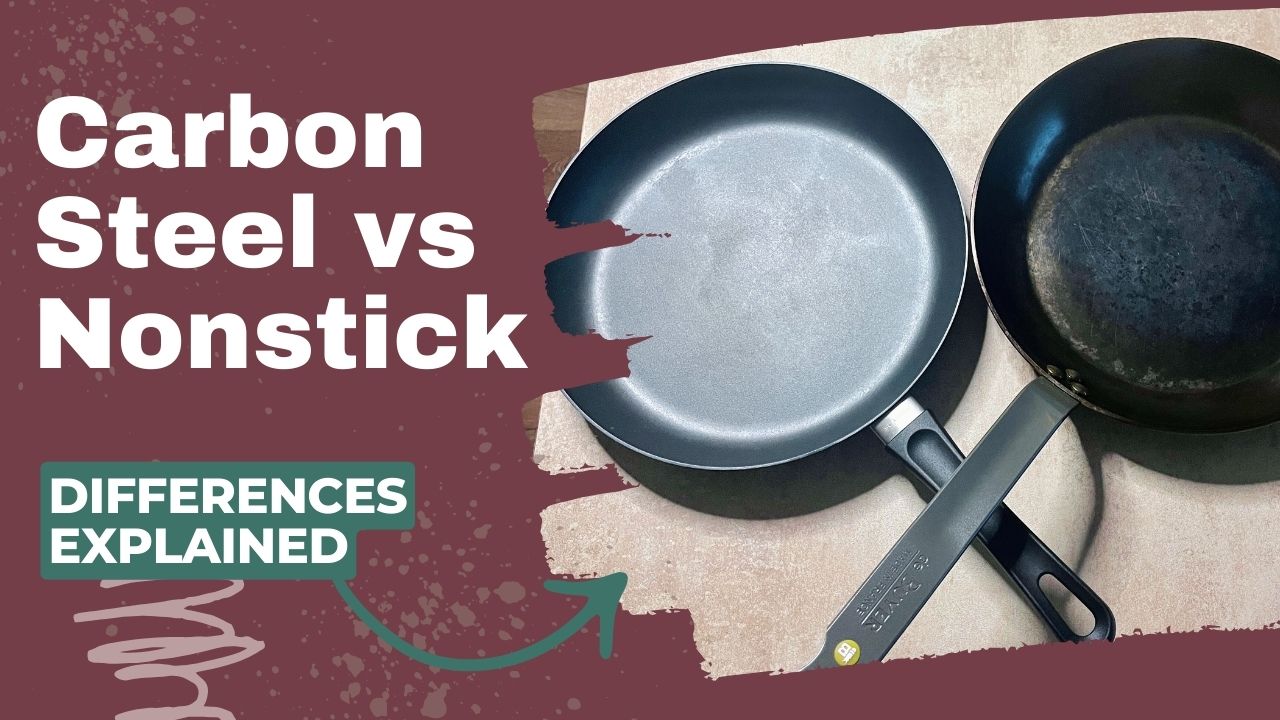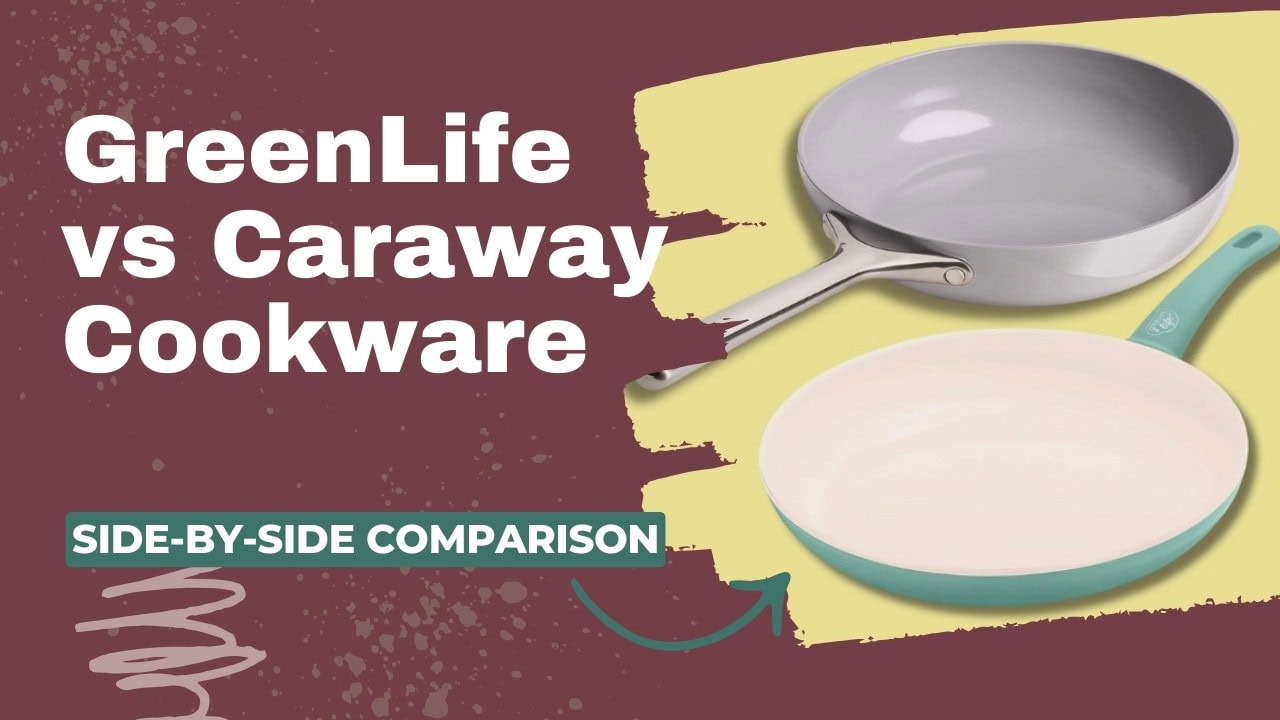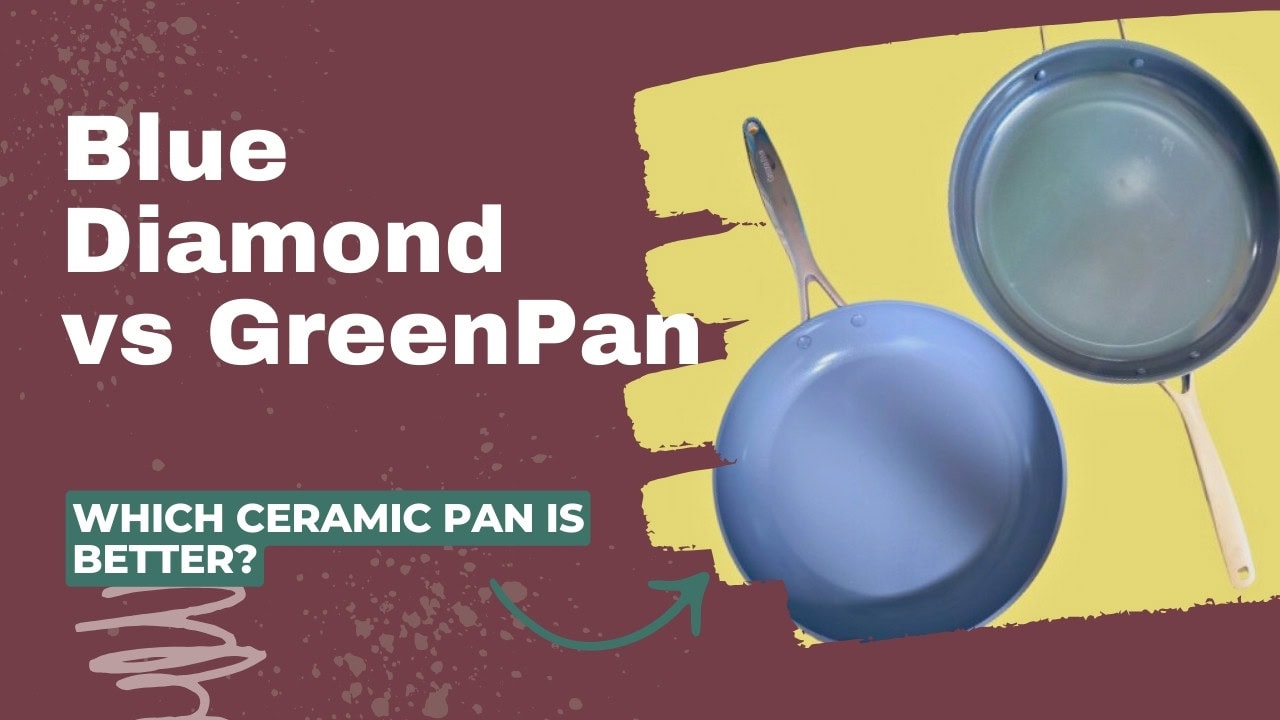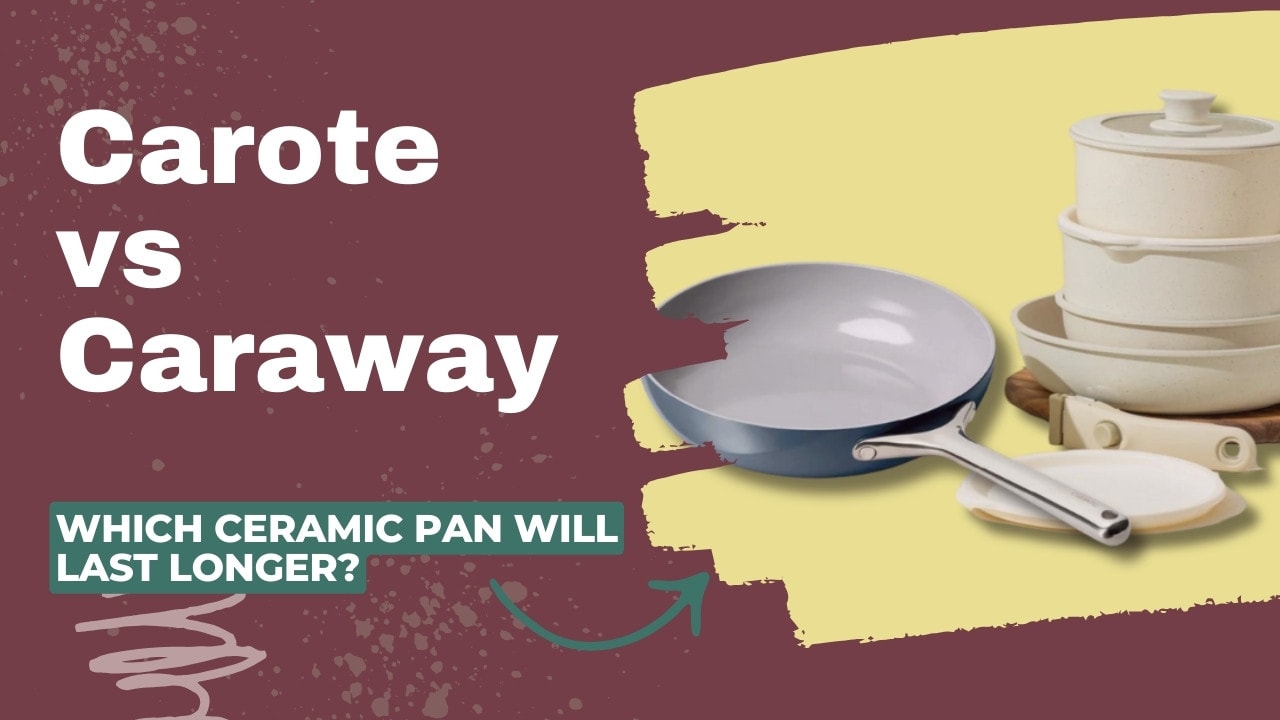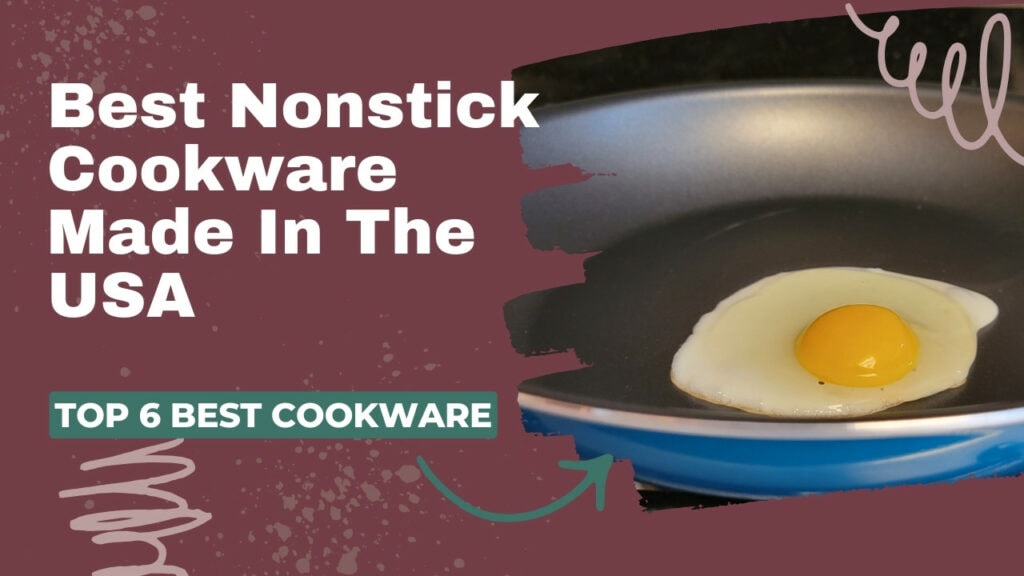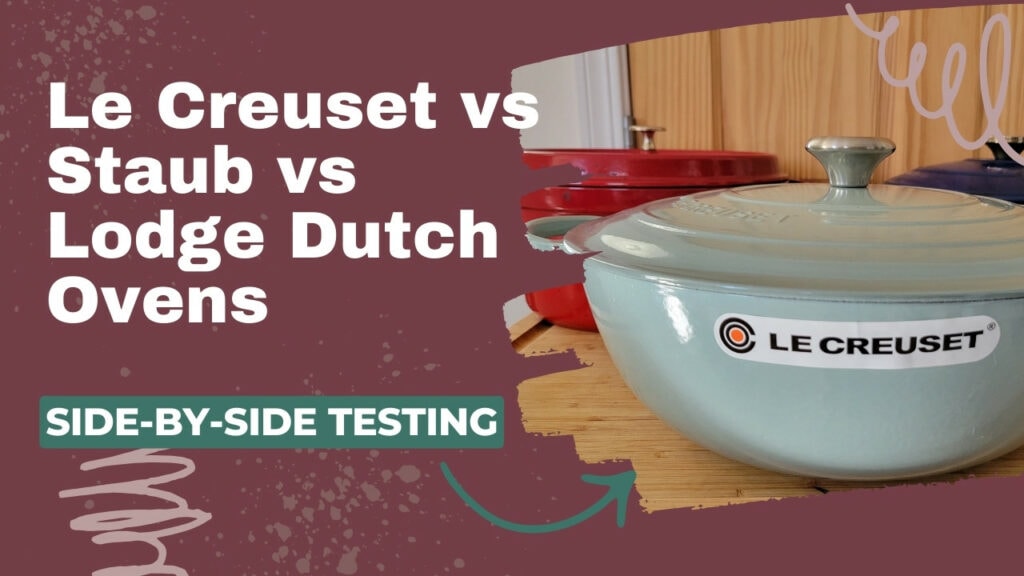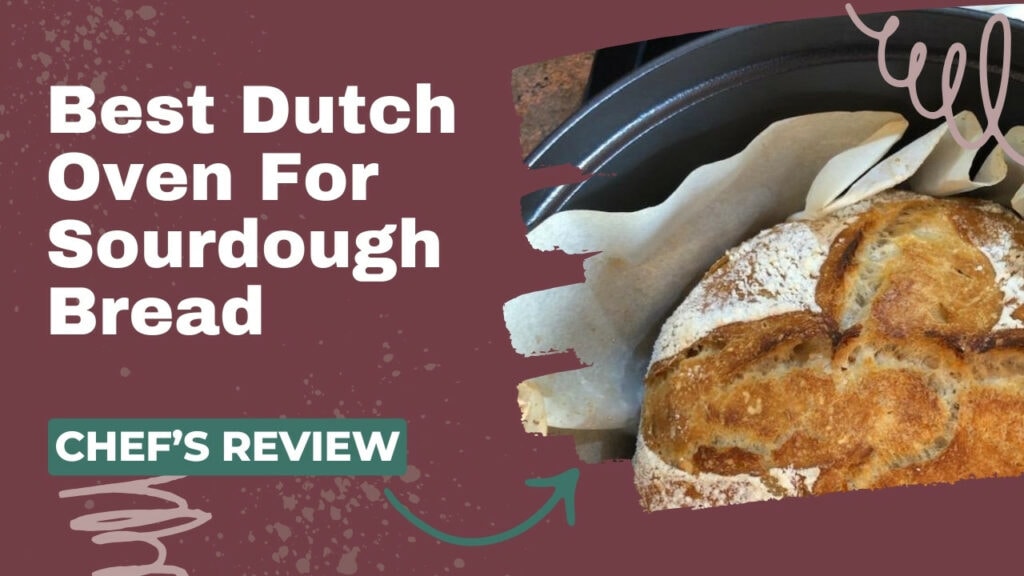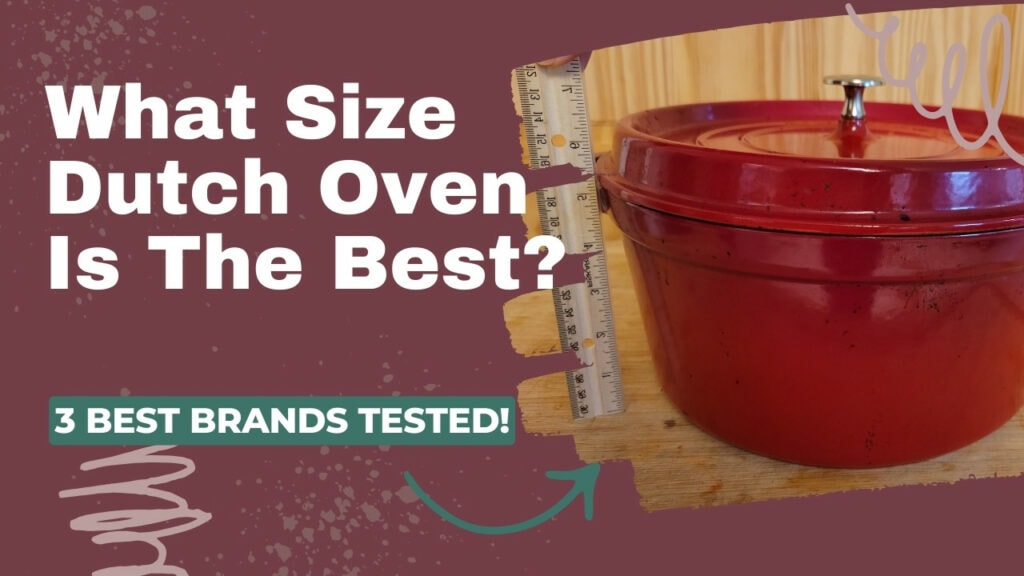When we say “nonstick pans,” we usually mean aluminum pans with a Teflon or ceramic coating on the cooking surface. Most of us grew up with nonstick pans – the Teflon kind – and never learned to cook with more traditional materials like carbon steel.
But today, many home cooks are turning back to uncoated metal pans, like carbon steel. Some people want a more versatile cooking surface that won’t scratch after 6 months. Others are looking for something without a synthetic coating. But if you’re new to carbon steel, you may wonder how it compares to the nonstick pans you learned to cook on.
Carbon Steel vs Nonstick Cookware – Which is Better?
Carbon steel and nonstick pans are two very different types of cookware used for different things.
Carbon steel is great for high-heat cooking and can last a lifetime. Nonstick pans are better for cooking delicate foods that require low heat and foods that are very prone to sticking.
Nonstick pans are a must if you want to cook without oil. But nonstick pans – whether you get ceramic or Teflon kind – just won’t hold up for more than 2-4 years.
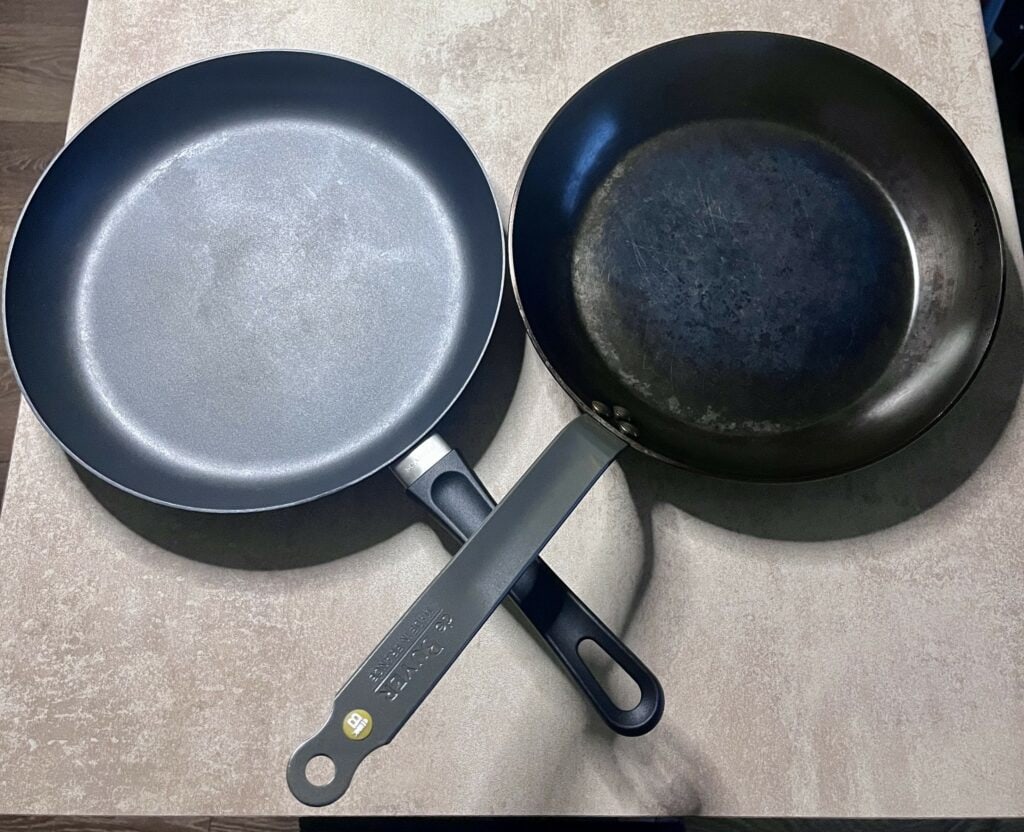
Is Carbon Steel Nonstick?
Carbon steel pans are somewhat nonstick. They are often touted as having a “natural nonstick surface,” but this claim is a bit misleading.
While carbon steel can become more nonstick over time with the buildup of seasoning from cooking, it requires medium-to-high heat and some oil for most effective use.
Do Carbon Steel Pans Get as Nonstick as Teflon?
The short answer to this question is no, they don’t.
Carbon steel pans are often advertised as having a “natural nonstick surface.” I think this statement is a bit misleading.
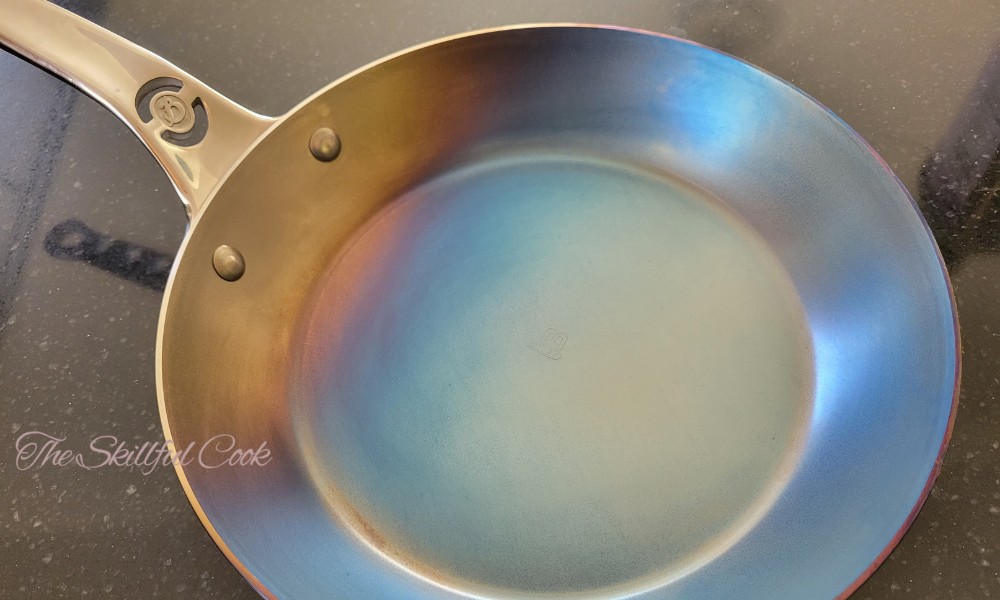
I dearly love my carbon steel pans. But if you’re expecting a carbon steel skillet to release eggs or pancakes in the way that a nonstick pan does, at low heat, without any oil, you’re going to be very disappointed.
Nonstick-coated aluminum and carbon steel pans are extremely different types of cookware. Nonstick pans come with a coating that repels water (and food) and prevents proteins from bonding to the metal of the pan. At first, this coating works like magic. But over a year or two of use, it will gradually get less and less effective.
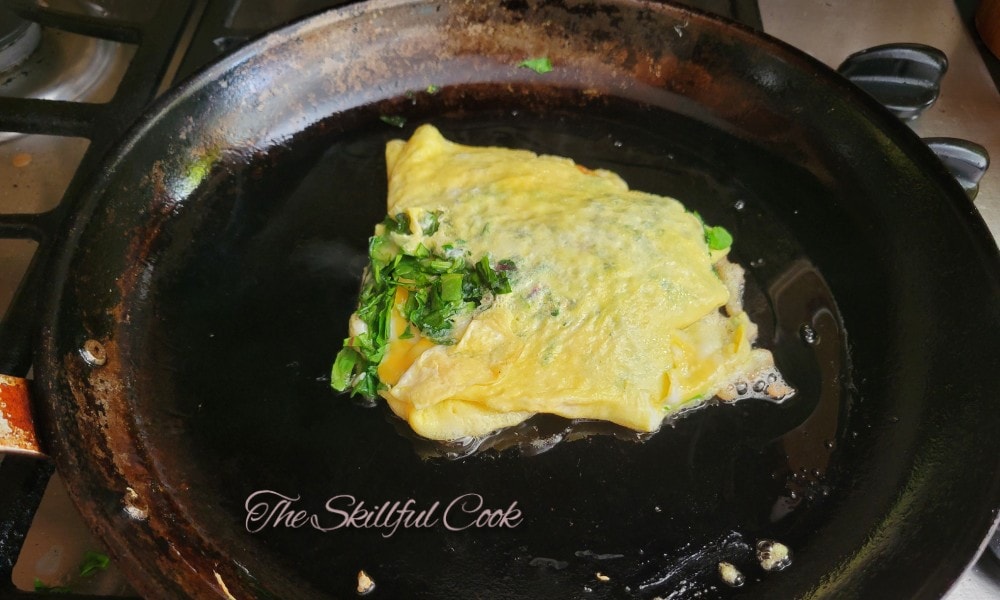
Carbon steel, on the other hand, gets better and more “stick-less” with use! As you cook with it, layers of polymerized oil build up on the pan’s surface. Foods absolutely CAN slide off carbon steel pans – but only when used at medium-to-high temperatures with some oil.
As time goes on and the seasoning builds, you can get away with lower heat and less oil – but it will never be as “dummy-proof” as cooking on new Teflon.
Carbon Steel and Nonstick Pros and Cons
Let’s take a close look at the pros and cons of both carbon steel and nonstick pans.
Carbon Steel
Pros
Cons
Nonstick
Pros
Cons
All About Non-stick Cookware
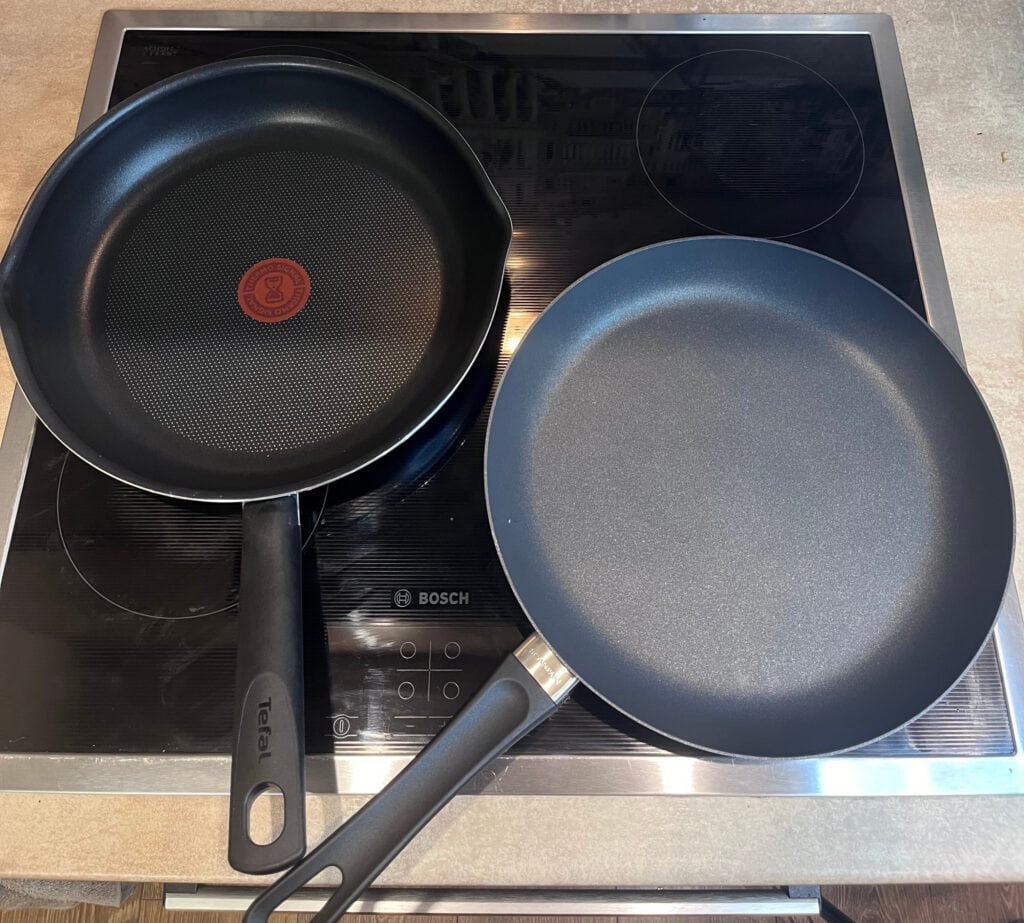
Nonstick pots and pans come in different shapes and designs – they could be skillets, saucepans, or stockpots. But nonstick cookware is always made of aluminum or stainless steel substrates coated with ceramic or Teflon.
Ceramic vs. Teflon Nonstick Cookware
Ceramic cookware has a glossy coating made of silicon oxide. In a process called “sol-gel,” silica is turned into a sprayable gel applied to the metal pan. The result is a tough and smooth surface with great nonstick features.
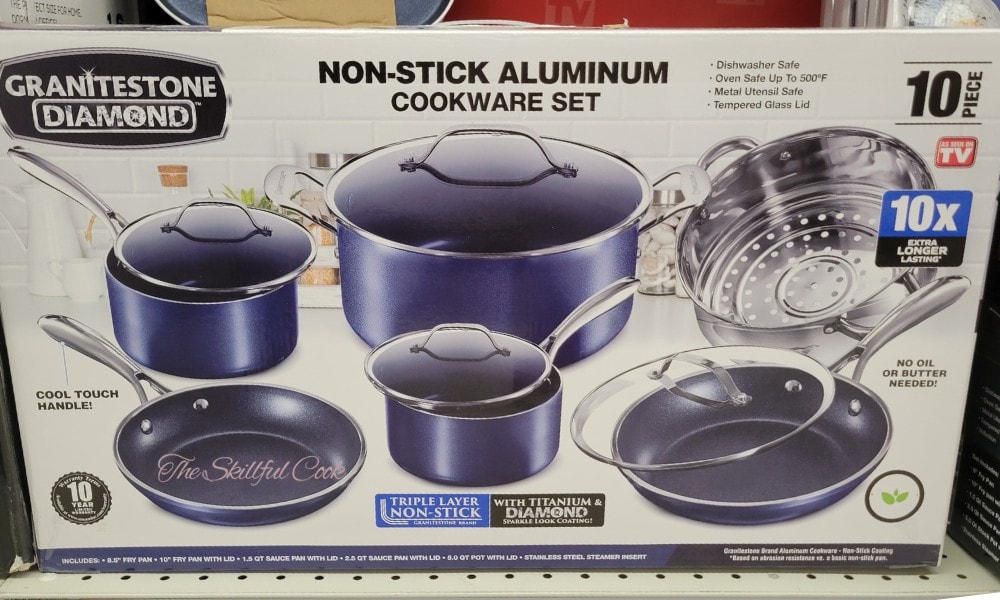
Traditional nonstick coatings are made of Teflon, or non-branded polytetrafluoroethylene (PTFE). It’s a polymer material made of carbon and fluorine, creating an easy-release surface that beats every other material in terms of nonstick ability.
You’ll probably come across other coating names, like “granite,” when shopping for nonstick cookware. That’s because manufacturers add “natural” materials like diamond dust, granite dust, or titanium to their ceramic coatings, trying to distance their products from regular nonstick cookware. But bear in mind that Teflon and ceramic are the only two types of coatings available, whatever extras are added to them.
What Can You Cook in Nonstick Pots and Pans?
Nonstick pots and pans are ideal for delicate foods like eggs and fish. Unlike steel pans, which can become nonstick-like with the right conditions, ceramic and Teflon pans are inherently nonstick.
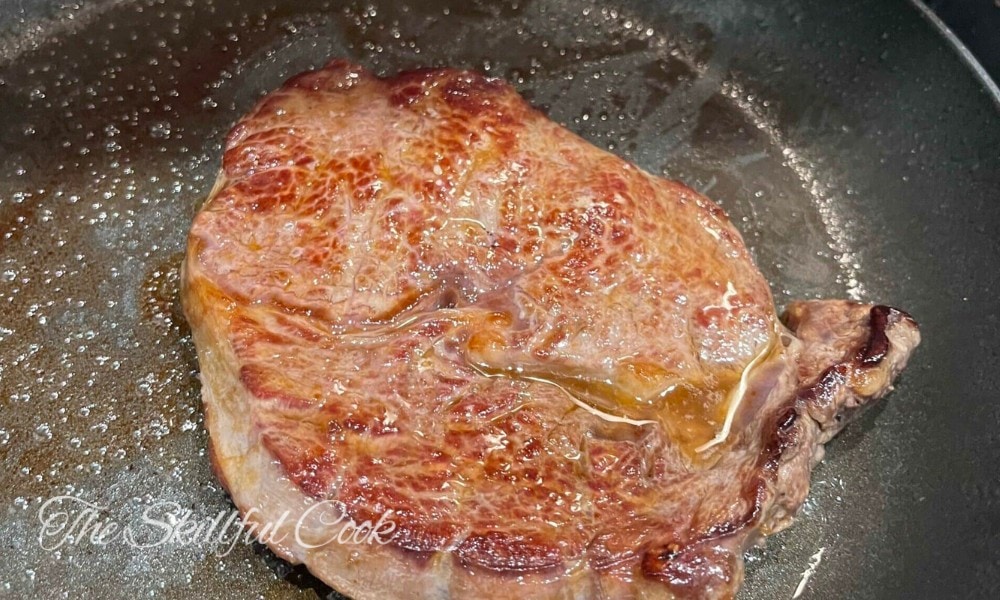
You can cook any food at any temperature, with minimal oil, without getting anything stuck to the pan’s surface. These beginner-friendly pots and pans are ideal for:
What Can’t You Cook in Nonstick Cookware
Nonstick cookware is a no-go for some cooking methods because it can’t handle high heat.
Teflon coatings can release harmful fumes if heated at temperatures higher than 260°C (500°F).
High temperatures can break down any kind of coating and shorten its lifespan. Ceramic pans can tolerate slightly higher temperatures, but still aren’t suitable for high-heat cooking. That means you should use your carbon steel, stainless steel, or cast iron pan for stir-frying or searing a steak.
Plus, when food doesn’t stick, it doesn’t create a fond. You can use the brown bits stuck to a pan after searing meat or veggies to create a delicious sauce or gravy.
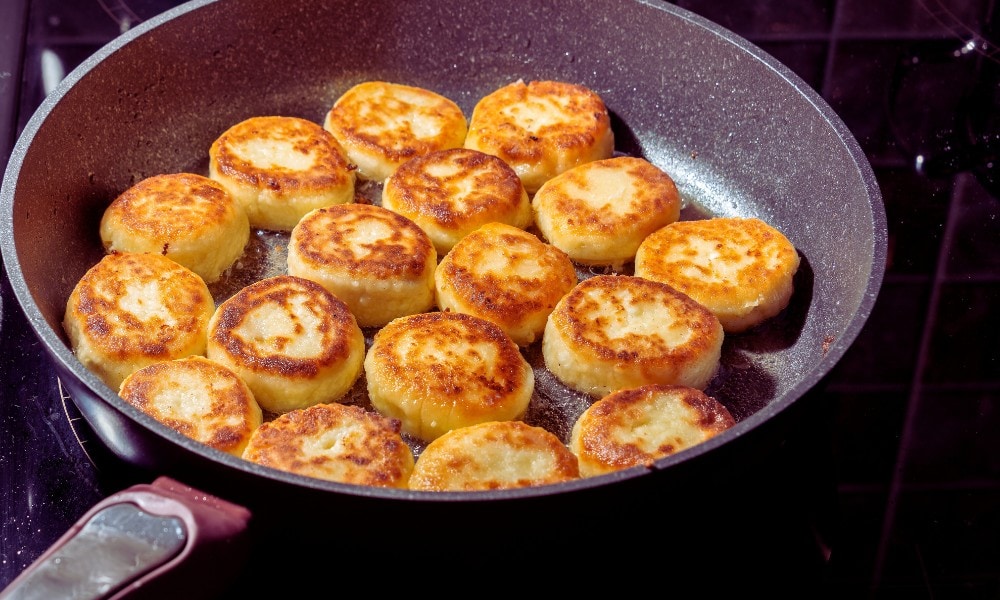
Another potential limitation of nonstick cookware is its sensitivity to acidic foods. Many chefs recommend against cooking low-pH foods like vinegar or tomato sauce in nonstick pans for more than a few minutes at a time, suggesting that the acid can wear out the coating.
However, we know from scientific studies that PTFE is a non-reactive inert material that can withstand strong acids. So, while you may not want to risk simmering a pasta sauce in a nonstick pan for hours at a time, we know that Teflon coatings can at least handle acidic foods better than carbon steel.
Do’s and Don’ts of Using Nonstick Pans
Unfortunately, nonstick pans – even luxury hybrid pans – will wear out quickly if you don’t take care of them. To protect the nonstick coating, follow these tips:
Are Nonstick Pans Induction-Compatible?
Many nonstick pots and pans are induction-compatible. Although most are made with aluminum, which is not inherently magnetic, many manufacturers add an induction disc to the bottom of the pans.
If you’re planning to buy a new nonstick pan, check to make sure the labeling says it’s induction-compatible – because many of them aren’t.
If you already have a nonstick pan and don’t know if it’s induction-ready, you can find out with a simple test. Take a magnet and put it on the bottom of the pan. If it sticks, your pan is induction-compatible.
Pro tip: If your nonstick pan is not magnetic on its own, you can use a stainless steel heat diffuser to make it work on your induction cooktop.
All About Carbon Steel Pans
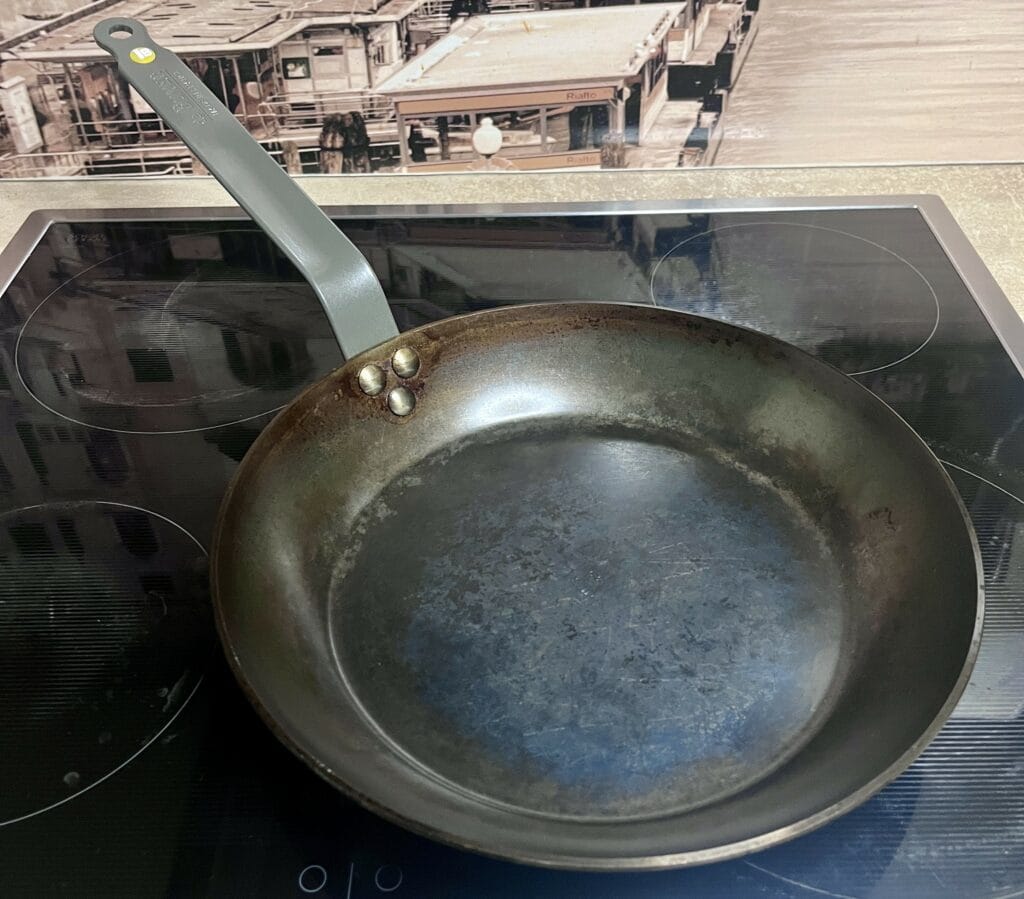
Carbon steel is generally praised as cast iron’s lightweight and more versatile cousin. Both are alloys containing iron, carbon, and trace elements of other metals, but carbon steel technically belongs to the steel family. So, it must contain a limited amount of carbon —lower than cast iron.
It has less than 3% carbon, making it stronger and less brittle than cast iron. This increased strength and malleability means it can be made thinner. But it has many of the same great qualities as cast iron: heat retention, a virtually nonstick surface, and versatility.
What Can You Cook In Carbon Steel Cookware?
Carbon steel is more versatile than nonstick cookware. There’s virtually nothing you can’t cook in your carbon steel pan except acidic and highly sugared foods.
It’s perfect for almost all cooking methods, including:
In a sense, I could say that carbon steel and nonstick cookware complement each other. You can use carbon steel when your nonstick cookware won’t cut it, and vice versa.
For example, nonstick pans aren’t ideal for searing meat and veggies, but carbon steel has no problem handling high heat. In fact, since carbon steel is 97-99% iron, it can tolerate temperatures up to 1200°F!
Disadvantages of Carbon Steel
And is there anything carbon steel can’t do, making you resort to your nonstick pans?
Carbon steel isn’t inherently nonstick, although it has a smooth surface. You can season carbon steel to make it almost nonstick, which bakes a thin layer of oil onto the surface and creates a glossy surface.
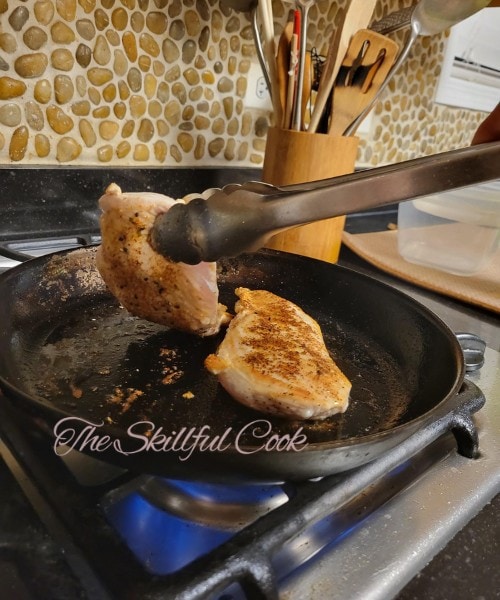
However, this seasoned surface develops over time — you can’t get it right out of the box. Plus, you may still need to add oil to your seasoned carbon steel pan to get an easy release.
But a nonstick pan takes the guesswork out of your cooking process and lets you fry even the stickiest and most delicate foods.
When it comes to variety, nonstick beats carbon steel. Most carbon steel cookware includes woks and skillets, although it’s not uncommon to find baking sheets and pots. But nonstick cookware is way more varied, available in all types and sizes.
Do’s and Don’ts of Cooking with Carbon Steel
Although carbon steel is tougher than nonstick pots and pans, carelessness can shorten its lifespan. If you want your carbon steel pan to last for generations, keep these pointers in mind.
Are Carbon Steel or Nonstick Pans Healthier to Cook With?
Carbon steel is generally considered healthier than nonstick cookware because its composition is simple and it has a long history of use. Carbon steel pans may leach iron into your food, which can be a benefit or a drawback, depending on your individual iron needs.
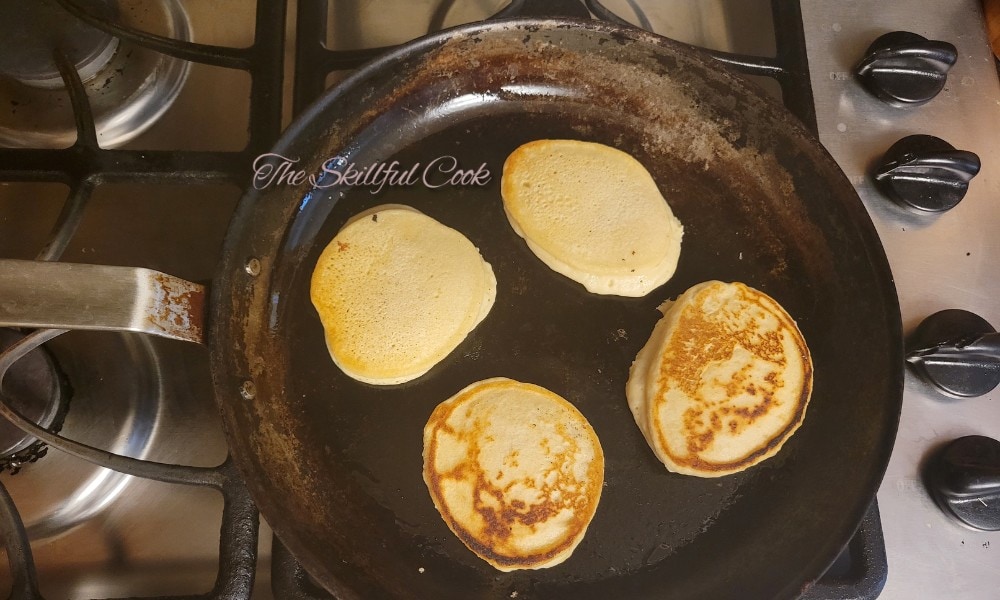
Of the two types of nonstick coatings, ceramic is usually touted as being healthier than PTFE. That’s because coatings of ceramic nonstick cookware are derived from sand and don’t contain certain “forever chemicals” (known as PFAS).
However, cookware with Teflon nonstick coatings is also considered generally safe to use by most experts if used correctly.
All cookware, Teflon or not, made after 2015 and sold in the U.S. is PFOA-free.
However, nonstick coatings made with can release fumes if heated above 500°F that can be toxic to humans and pets, especially birds.
Which Lasts Longer – Carbon Steel or Nonstick Pans?
Carbon steel pans last longer than nonstick pans, every time. In fact, they get better with age. Unlike nonstick pans that need to be replaced in a few years, carbon steel can last a lifetime if maintained properly.
While the aluminum bodies of nonstick pans are often well-made, the coatings, whether made of ceramic or Teflon, will wear out in 12 months to 3 years of use.
Are Carbon Steel or Nonstick Pans Harder to Cook With?
Carbon steel is trickier to cook in than nonstick pans, since it needs to be seasoned and handled correctly to release food. Pans with new, intact nonstick coatings are a breeze to cook with. You don’t need to use any or much oil when cooking in nonstick pans, and don’t need to preheat them. In fact, the hardest part of cooking in nonstick pans is avoiding overheating them.
So Which One is Better?
Neither is inherently better than the other since both types of pans serve different purposes, and both have their place in the kitchen. I prefer carbon steel, but that is primarily because it best accommodates my style of cooking.
That said, I also own a ceramic non-stick pan that I use for cooking on low heat, but I don’t use it as often as I do my carbon steel pan.
To recap, if you want easy and hassle-free cooking without the need for preheating and seasoning, then nonstick cookware is the way to go. However, if you want more versatility and save money in the long run, then carbon steel may be the better choice. You just need to develop the necessary skills to use it effectively.
Do you have nonstick and carbon steel cookware in your kitchen? Please share with us your experiences and insights about using them.

